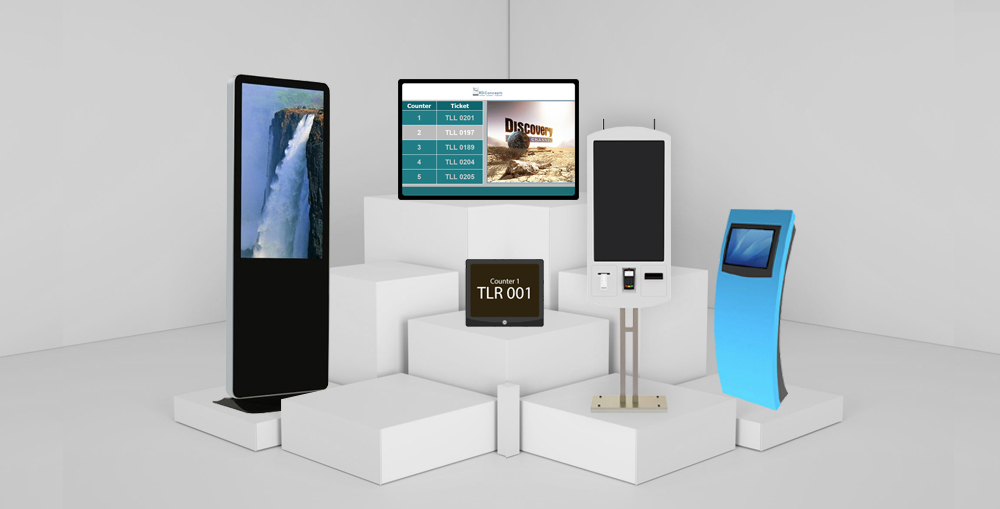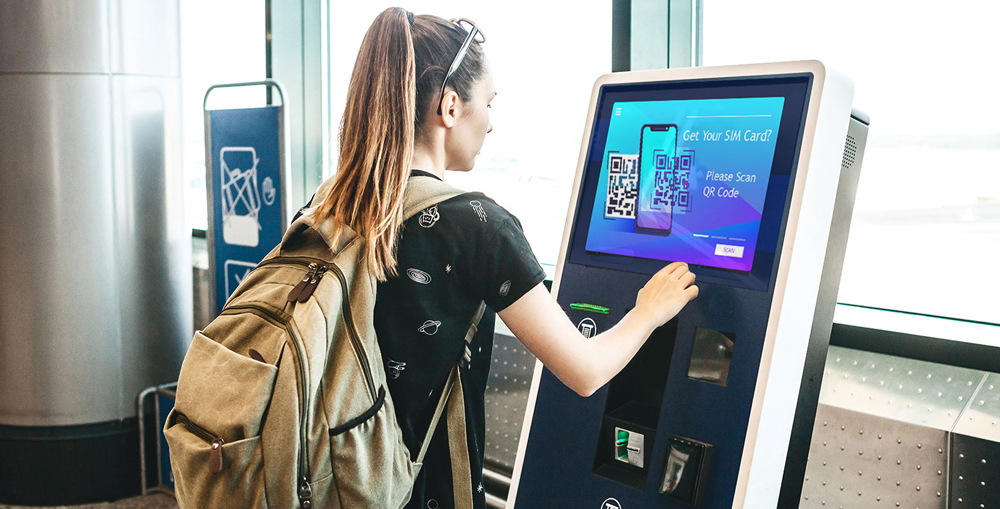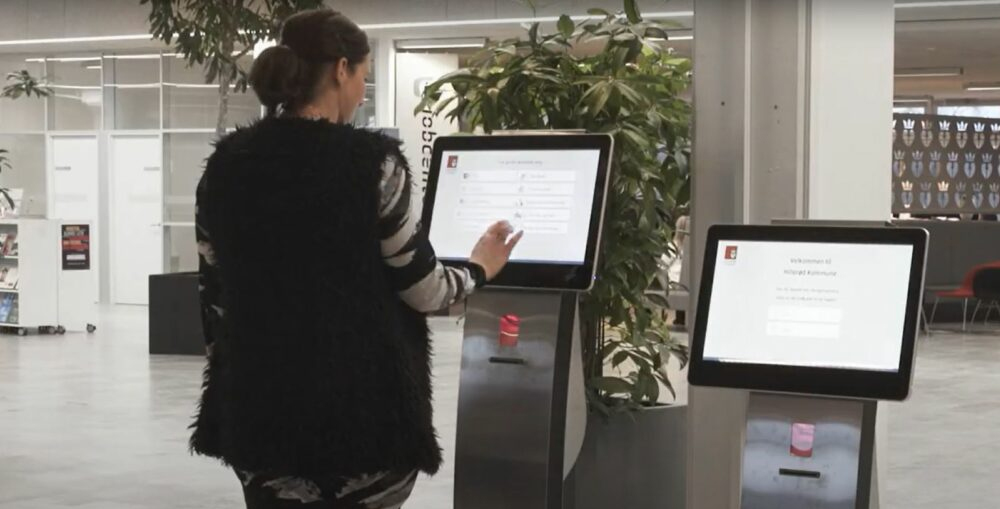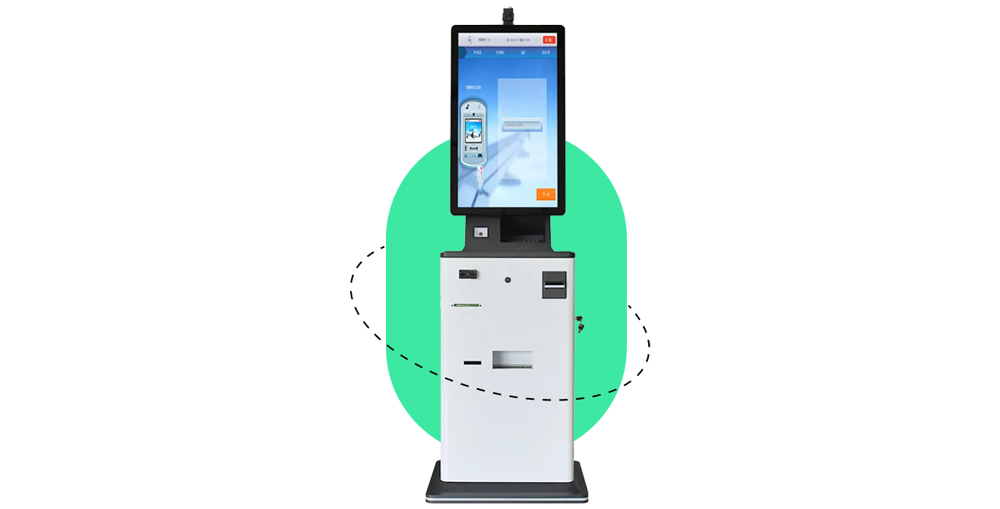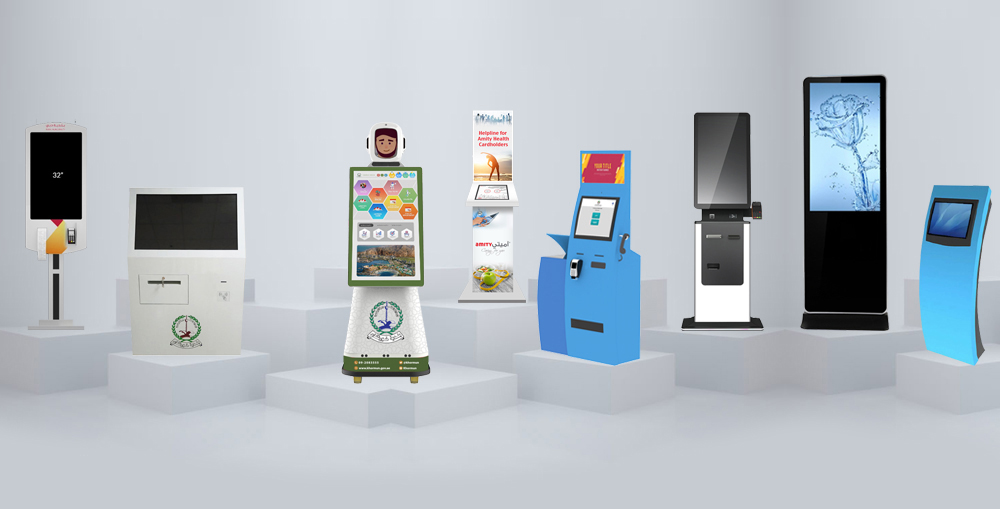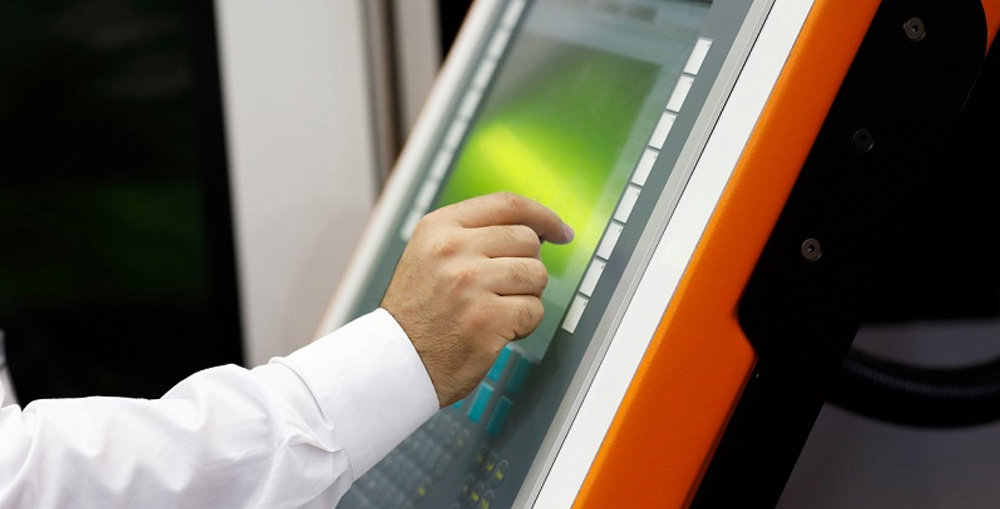In customer service sector the operational efficiency and performance is crucial for long-term business success. The customer satisfaction is the top priority of every business whether it is a bank, hospital, real-estate management firm, educational institute, public office or government agency. Therefore such businesses and organizations tend to implement digital queue management system to streamline their customer flow. A digital queue management system has become integral part of modern customer journey management practices. It streamlines customer flow, automate vital processes, reduce customer wait time and improve staff performance. All these factors contribute to customer satisfaction giving businesses great competitive advantage and helping them to build their brand reputation.
When it comes to queue management system, there are several different types of modern queue management solutions. Some businesses require virtual queuing, some need appointment booking or mobile app integration and so on. However, one thing is common among all types of digital queue management systems and that is their remarkable ability to collect valuable analytical data and insights. This insight is extremely effective in decision making and resource planning processes. And these two processes have direct impact on operational efficiency and performance which is deeply connected to customer satisfaction. In this blog we will discuss how businesses can leverage queue management system’s analytical data to enhance operations and drive performance.
See Also: What is Queue Management? Beginner’s Guide to Queuing Systems

What Type of Analytical Data a Queue Management System can Collect?
A queue management system is a very powerful tool, it consists of an AI-driven software solution and supportive hardware devices. The software collects and monitor analytical data from all touch points which is later converted into actionable insights. These insights help businesses improve customer flow, reduce customer wait time, boost staff performance and enhance overall operations. Here are some key analytical data types that can be collected by a digital queue management system:
See Also: Why do you need a queue management system?
Customer Flow Data
- Arrival Rate: The number of customers or footfall at a customer service center during a pre-defined time period. Usually it is on hourly, daily, weekly and in some cases monthly bases. This help planning resource and identifying peak hours. It also help forecast and predictive analysis.
- Service Time: The amount of time each customer had to spend to get the service is called service time. This information is very helpful in identifying the flaws in internal processes, workflows and various customer journey steps.
- Customer Wait Time: This is often confused with service time but the customer wait time is the time a customer spends in the queues form signing up to reaching to the service counter. This time is crucial in customer experience management.
- Queue Length: Whether physical or virtual queues, the queue length is crucial. It is the measurement of the number of customer in any queue at any given point of time. This help businesses improving customer flow and monitored in real-time.
See Also: The Concept of Queue Management and Crowd Control

Customer Demographic and Behavior
- Customer Profiling: The customer profiling is collecting demographic data about customer such as their age, gender, and location. This data is often collected during onboarding or through loyalty programs. The queue management system linked it to a customer interaction.
- Customer Journey: The customer journey starts from the point a customer enters in a queue and it last up till customer gets the service and left. The queue management system records customer interaction at all touch points and generate actionable insights form this data.
- Repeat Visits: This is very important data, it help businesses understand which customers are visiting service points more often, what were the nature and reasons of their visits and the relevant data about their interaction. It helps improving customer experience and journey.
See Also: What are the Basic Components of Queue Management System?

Service Performance Analysis
- SLA Compliance: The SLA or Service Level Agreement compliance indicates if the customers are served within the maximum allowed service time, wait time and time to resolution. This help understanding the compliance with the pre-defined SLA standards and it help businesses maintain optimum levels of customer experience and satisfaction.
- Resource Utilization: The resource utilization is a comprehensive analysis which includes multiple metrics and help businesses understand if the resources in hand were utilized with optimum efficiency. It also help identifying the overstaffing, understaffing and idle time. This data helps in strategic decision making and improving overall operational efficiency.
- Staff Performance: A queue management system can record several staff KPIs (key performance indicators) such as number of customer served, average service time for individual services, idle/off time or breaks and customer feedbacks. These metrics help businesses identify training needs and improve training and reward programs.
See Also: What are the Different Types of Queue Management System?

Predictive Analysis and Forecast
- Demand Forecasting: The queue management system can analyze historical data and identify patterns which help businesses accurately forecast customer flow at any day or time. This information is extremely crucial in resource planning.
- Wait Time Prediction: The queue management system can provide accurate measurement of expected wait time based on the current queue length, service delivery time, and available staff’s strength. The wait time prediction is important for customer experience and it can be provided to customer via signage, and other channels to set realistic expectations.
- Staff Performance Prediction: That is a bit complex metric, it consider the overall staff performance and their efficiency in individual service delivery along with historical data and demand forecast the queue management system can predict performance of available staff at any date or time which is important in human resource planning.
See Also: What Is Virtual Queuing? A Guide to Virtual Queues

Customer Feedback Data
- Post-Service Surveys: The queue management system can be integrated with customer feedback and survey system. Usually businesses use countertop interactive displays, QR Codes, and emails to collect customer feedback. The queue management system can link this feedback with a specific customer interaction which improves insights and analysis.
- Net Promoter Score (NPS): The Net Promoter Score or NPS is the single most effective metric to analyze the success of any business or organization. This is a simple and quick method to collect customer feedback. Queue management system can collect this feedback from interactive kiosk, countertop displays, SMS, emails, WhatsApp, etc.
- Customer Sentiment Analysis: The AI-powered queue management system can effectively analyze the tone, content, and context of the customer feedback or suggestion. It can also link it to a specific interaction which reflects in multiple reports, such as customer satisfaction and staff performance reports.
See Also: How to Set Up SMS based Queue Management System?

Queue System’s Operational Data
- System Utilization Data: This is a simple metric, it measures how effectively a queue management system is being sued such as up-time, down-time, usage patterns, and any other interruption.
- Transaction Logs: This includes detailed log of every interaction. The queue management system records entire transaction details such as customer arrival time, wait time, service start time, service end time, and all the actions taken by the customer service agents.
- System Access Logs: The queue management system keeps record of all user’s all actions. Such as who signed-in, when signed-in/signed-out, what user perform what action, and other system stats which are vital for audit and security improvements.
- Real-Time Monitoring: The queue management system provides live queuing data to the management. The live data indicates current queue status, active services, customer flow rate, live staff performance and it also indicates trends that help management take immediate actions or make adjustments to prevent crowd formation or congestion.
See Also: Paperless Queue Management System

Customer Engagement Data
- Queuing Policy Analysis: The queuing policy or queuing rules are the prioritization of different customer segmentation and impact of different channels on the overall queuing dynamics. For example, number of VIP or Customers with Special Priorities signed-up, their interaction details, number of virtual queue-based and appointment-based services and their impact, etc.
- Queue Type Analysis: The volume of customer inflow from various queuing channels such as physical, virtual or appointment-based service requests. The queue management system also help identifying the patterns and impact of all these different queue types on overall operations.
- Interactive Kiosk Interactions: The queue management system provides an intuitive UI for interactive ticket dispensing kiosks. It also records how customers are interacting with these devices, what they are choosing, what information they are providing or accessing through these screens and much more.
- Virtual Channel Interaction: A modern queue management system captures analytical data of customer engagement through various integrated virtual channels such as Mobile Apps, Customer Portals, Appointment Booking Portals, SMS, WhatsApp, etc.
See Also: 7 Features of Queue Management Software

These are some of the most common analytical data types a modern digital queue management system captures. Furthermore businesses can also customize a queue management system to capture more data types such as in some cases businesses also require biometric authentication or self-registration which involves payment, document scanning and much more. All these data types can also be stored in the central data repository where the AI-powered smart algorithms and advanced analytical tools can help businesses generate in-depth insights and reports.
How Businesses can Leverage the Queue Management System’s Analytical Data to Achieve Superior Operational Performance?
In today’s modern and highly competitive market landscape businesses tend to rely more on data for strategic decision making and policy building processes. The term data-driven and informed decision making is not a fancy phenomenon but an absolute essential for the business success. Businesses operating in Dubai, Sharjah, Abu Dhabi and broader UAE are well aware of the importance of data and its impact on performance, resource planning, cost-optimization and growth.
See Also: How Queue Management System Helps Maximizing the Efficiency?
Therefore the queue management system’s analytical data plays a pivotal role in customer service and customer experience management practices. Businesses always strive to achieve highest possible operational performance because smoother operations means satisfied customers, lower operational cost and improved brand reputation. One of the primary goals of deploying a digital queue management system is to elevate customer experience and optimize operational performance.

A queue management system can produce a wealth of analytical and business intelligence data which can be used to understand the customer flow, queuing process, staff performance and effectiveness of the service delivery mechanisms. The analytical data also help businesses evaluate various internal processes, workflows and strategies which is crucial to identify the strengths, weaknesses and areas of improvements. Here are some key areas which businesses can greatly improve by leveraging the analytical data generated within a queue management system for operational excellence:
See Also: How Queue Management System can Boost Productivity and Profitability?
Improve Staff and Resource Allocation
For staff and resource allocation businesses need a comprehensive understanding and information of customer flow, peak hours, peak days, different service demand at different point of time and the impact of various factors on the operational efficiency. This information and understanding ensures your branch has required staff and enough resources at any given point of time and day as per the expected demand and customer flow.
This also ensures maximum level of queuing efficiency which is a key to minimize customer wait time and maximize customer satisfaction. The real-time queuing data helps businesses to allocation resources with higher efficiency and efficacy. For example, you can assign more experienced staff to the complex services and vice versa or you can adjust the number of available service counters in real-time to deal with the incoming footfall. The analytical data also help businesses to prepare for unprecedented scenarios and conditions and enhance queuing management.
See Also: Streamlining the Waiting Experience: How Queue Management Systems Improve Patient Flow

Enhance Customer Experience and Raise Customer Satisfactions
The customer experience and customer satisfaction are the two most crucial and interdependent factors that differentiate a business from others. Hence offering an elevated customer experience not only raise customer satisfaction but also help elevating customer loyalty and overall brand reputation. The queue management system inherently reduce the customer wait time. It improves the service delivery mechanisms and boost staff performance which resultantly elevate customer experience.
Furthermore the queue management system increase customer engagement and help simplifying customer journey which are important to raise customer satisfactions. The queuing data, historical data, predictive analysis and staff performance insights help businesses effectively allocate resource to keep the wait time at minimum all the time. Furthermore the queue management system also has ability to identify different customer segments and profiles which is essential for delivering a personalized customer experience and it also help implementing the queuing policy effectively.
See Also: Queue Management System for Trucks and Logistic Centers

Automation and Service Efficiency Optimization
The queue management system collect service time, customer wait time and service staff performance KPIs. These insights are vital in identifying the bottlenecks in service delivery processes. By identifying the bottlenecks such as services or queues that take more time, queuing policies and rules which are effecting other queues or causing delays can help businesses identify the root cause of any problem. This also help businesses revisit their polices, strategies rules, and even businesses can make adjustments in relevant processes, workflows and service delivery mechanisms to minimize the customer wait time.
On top of that the queue management system also provides comprehensive staff performance data which help management retrain staff to improve their efficiency for services, workflows or tasks for which they are taking more time to complete. The queue management system can also help automating various processes and workflows and it is capable of integrating with other third-party systems, customer databases, and central information system. This enables a queue management system to empower service agents too through dedicated service agent dashboards.
See Also: How Queue Management System Helps to Provide Better Customer Service

Data-Driven Decision Making
Businesses can leverage the historical data and various in-built analytical tools to understand and forecast future demands. This help management make more informed and data-driven decisions for staff allocations, service delivery enhancements, service counter expansion or resource allocation and customer journey adjustments. This also increase business’s readiness to deal with unexpected scenarios and conditions and make their management more proactive and keeps them ahead of service demands customer needs and market trends.
Businesses can also leverage the analytical data for performance benchmarking. The management can easily compare the performance of different branches, locations or departments, which help management identify the most effective and efficient practices. It also help them identify the areas of improvements which is crucial for decision making. Businesses can also standardize the high-performing processes and identify under-performing or poorly performing practices and processes.
See Also: Importance of Queue Management System for Government and Public Offices

Proactive Management and Preventive Measures
Things are moving so fast at any customer service center, businesses needs a proactive management approach to deal with modern queuing challenges. Furthermore the management should have a strong and effective preventive strategy which help them prevent crowd formation, congestion, and help dealing with unexpected or disruptive situations. Businesses can utilize the predictive analysis data to identify the peak hours, expected footfall and staff performance challenges which help them prepare for the future.
For example if a surge is detected during lunch breaks or during closing hours, businesses can effectively prepare their resources to deal with both scenarios by simply extending service counters during that time. The AI-driven in-depth analysis help businesses predict and identify the disruptions, due to planned or unplanned maintenance or staff planning scenarios or any external factor. This readiness help management to take preventive approaches and neutralize any such event even before it happens.
See Also: Why Small and Local Businesses Need a Queue Management System?

Conclusion
Leveraging queue management system’s analytical data and business intelligence can help businesses streamline their customer flow and optimize their operational efficiency. A queue management system is a very capable and smart solution which captures tons of analytical data. This analytical data covers all ranging from customer wait time to complete interaction details and further extending to staff performance KPIs and much more.
With this crucial data in hand businesses can make informed decision which help them optimize customer journey, customer experience and staff performance. For any business analyzing their existing workflows, business processes, strategies, polices and management approach is crucial. It helps them identify the strengths, weaknesses and areas of improvement. The data-driven management approach empowered by the analytical data of a queue management system not only help businesses dealing with current challenges but it also help them anticipating future demand and condition. This is what makes queue management system more superior and impactful in raising customer satisfaction and boosting operational efficiency.
The insight generated from queue management system’s analytical data is invaluable for smoother operations. In this blog we have discussed various types of analytical data which can be collected form a digital queue management system and their impact on various operational processes, decision making and management practices. If you want to learn more about the subject or if you want our help to design and implement a bespoke AI-driven cost-effective queue management system for your business or organization, please contact us through our Contact Us page or leave a comment in the comment section below and we will get in touch with you soon.
See Also: Pros and Cons of Queue Management System





